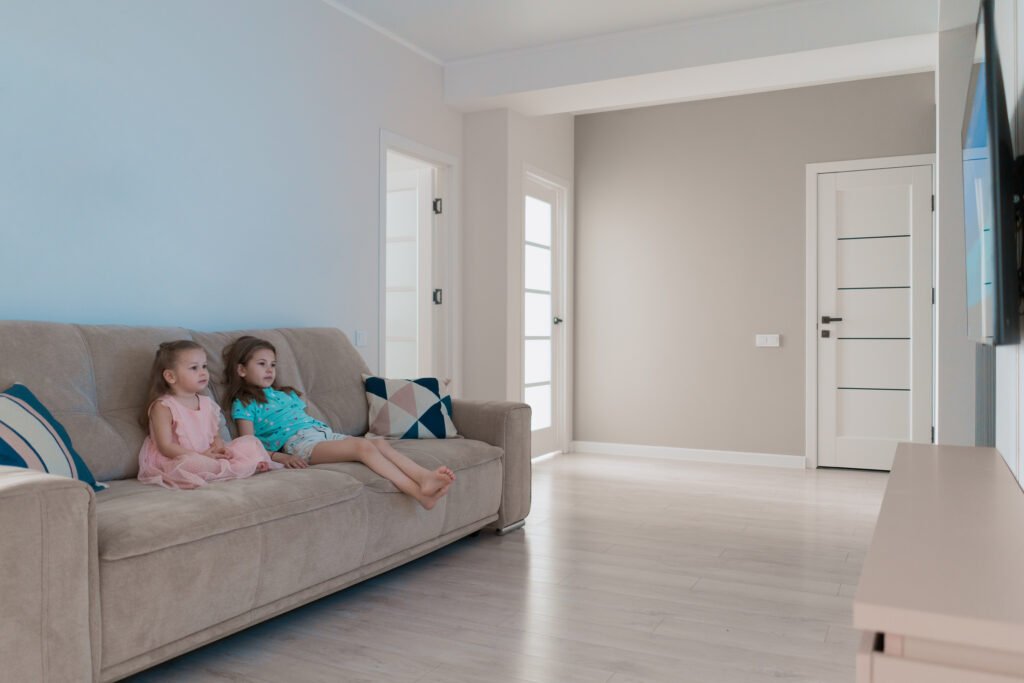Children today are born into a multi-screen reality. If in the previous decade they tried to limit the viewing of them as of today we understand that the technology is here and will stay with us and will even break into other places in our lives. Although the first studies in this matter found that watching television harms children's normal development, the studies of recent years show that guidance and understanding for proper viewing can benefit the child in adulthood and even serve him throughout his life. Correct use helps in the development of cognitive skills, language learning, construction of reality and behavioral schemes, motivation for research and experimentation, ability to understand and branching thinking, an agent of cultural, civil and behavioral friendships and even, complementary learning to what is learned in educational institutions. To operate in a world of screens we must understand how to deal with them, control the screen for positive needs and try to influence our children to live correctly even with the screens and technology.
How do we achieve these benefits in children?
We are used to believing that watching the screen harms the cognitive development and the healthy mental development of the children. Children who watch a screen for hours every day without the denominator of watching, we see an effect on the behavior that becomes violent, passivity and low academic achievements.
But a new study from 2019 at the University of Oxford that examined more than 350,000 children found that screen time had no effect on mental health and tendencies toward loneliness or depression. (Monar, 2019)
Another study conducted under the supervision of the Children's Health Center at the Seattle Hospital, examined how a change in the content that the children watch affects them, when we let 565 families watch programs that included only positive content, the parents reported a change in behavior and a positive effect on the child over time.
Children and the ability to understand digital content
The starting point is that the digital broadcast content is a combination of content and formal characteristics. The child activates thinking schemes that develop over time.
The toddler is attracted to the formal characteristics and he interprets the figures based on their external characteristics, because his understanding is of the 'here and now' and he has no capacity for emotional reflection. As the child grows older, he is able to understand the plot, able to distinguish what is imaginary and what reflects reality and identifies with the characters based on their behavior. As he matures also based on the ability of moral judgment.
Understanding the meaning according to age:
At the age of 0-3: the child believes that the digital video is reality. He does not differentiate between reality and what he sees in the digital broadcast, he is attracted to the content viewed on the screen as long as the plot is simple and not too complex.
Age 3-6: The child develops the ability to distinguish between reality and digital, initially he distinguishes between the news broadcasts and the other genres and later also between the genres themselves, such as: distinguishing between a cartoon and a story with actors. He begins to understand a simple and uncomplicated plot and will be bored by a broadcast with an overly simple message.
From the age of 6-10: the child already develops an understanding between reality and fantasy. When he already has experience both in watching and in everyday life. He will understand a message that is clear and corresponds with the plot and will be drawn to the screen as long as the viewing makes him curious and interested.
Viewing as active and useful learning
One of the solutions to mobilize the screen for the benefit of the child and not for his detriment, is active viewing. When the parents or educators mediate the viewing for the child. A conversation about the plot or the message will help the child mediate feelings and assimilate non-violent messages, create interest in the projected information and search for content that will make the child active following the viewing.
How is it actually done?
From the age of 0-4: a joint conversation following watching the digital content will contribute to the development of the language and understanding of what is happening in the toddler. Here are some examples,
Shiom - giving names to objects and figures.
Presenting questions - we will direct the toddler's attention to the content and get him involved in the viewing by asking questions.
Giving a response - we will be alert to the toddler's response and give answers to his questions.
Presenting a description - we will describe the content to the toddler in our own words, thus conveying to him the plot and the educational and positive message.
From the age of 5 and above, a conversation following the viewing will add to the child more knowledge and information about social behavior:
A conversation with an information orientation when the parent adds or enriches the knowledge learned.
A conversation with a behavior orientation when the parent refers to the behaviors observed in the context of desirable and undesirable according to the child's day-to-day reality
Viewing with a parent or educator versus individual viewing
Watching with a parent or educator can increase the child's understanding and enjoyment and even empower him. Because the parent helps the child understand and draw conclusions, clarifies and explains the content.
Another advantage of the parent's involvement during the viewing is that the child perceives the shared viewing and the viewed content as important and valuable, creating concentration and active viewing. We will also add to this a quality hour between parent and child that connects them emotionally and creates a shared experience between them.
In personal viewing, the child is a passive viewer, we have no control over what he understands from the plot and the message. And the child also receives the hidden message that the screen is the babysitter when the parents are busy. Passive viewing will not cause the child mental effort and the fear is that an excess of passive viewing will cause 'mental laziness' also in everyday life and studies.
However, watching with the parent can increase the level of concentration and mental effort because the child perceives the joint viewing as important. And they even discovered that as the content is more interesting, relatively complex and perceived as important by the child, he invests mental effort in understanding it and develops cognitively.
In conclusion
The screen is part of everyone's daily routine. We should know how to use it for the benefit of the child's development, for conveying educational messages and imparting knowledge. Creating active viewing with the child, even in part of his screen time, will create an opportunity for us to convey educational messages. You will create mental effort in the child, active activity following watching and even imparting knowledge.
Another advantage we will receive is that the child will begin to understand that the contents of shared viewing are important, while those of individual viewing will become secondary. The shared experience and quality time can also be through the screen, especially at a young age.
sources
- Lamish Dafna. (2002) The small screen in the lives of children and teenagers, volume 1 . Tel Aviv: The Open University.
- Moner Ofer. (2019) https://ux.haifa.ac.il/elementor-1480/
- Amy Orben. (2019) Department of Experimental Psychology, University of Oxford, Oxford, UK
- Andrew K. Przybylski (2014) The association between adolescent well-being and digital technology use Amy. https://doi.org/10.1038/s41562-018-0506-1


